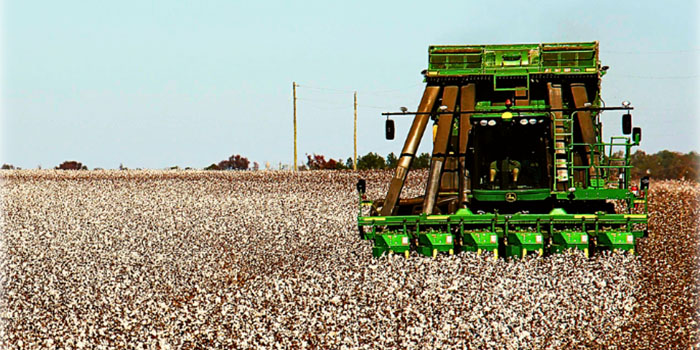Low commodity prices and declining credit availability are impeding cash flow for Georgia farmers, said University of Georgia agricultural economist Brady Brewer.
Brewer, an assistant professor in the Department of Agricultural and Applied Economics in UGA’s College of Agricultural and Environmental Sciences, suggests farmers do an extensive self-evaluation of their farming operation to make sure they can continue to farm in the foreseeable future.
“Farmers need to conduct a thorough review of all operating expenses and all productive assets to make sure they’re returning more value to the farm than what it costs,” Brewer said. “Where can you cut unnecessary expenses? Where can you sew off any assets you don’t use or don’t need? That’s going to go a long way in helping farmers in this environment, where low commodity prices are running rampant.”
Brewer has spoken with bankers and UGA Cooperative Extension agents during the past few months to assess the current state of farming. To the surprise of some farmers, the availability of credit is starting to erode.
“You’re already starting to hear stories of bankers denying farmers credit for operating loans or banks tightening the restrictions on the credit they make available,” Brewer said.
If farmers can’t establish a line of credit with a lending institution, they’re not able to do things like buy seed, purchase fertilizer or pay the bills that come with irrigating their crops. Brewer said most farmers haven’t encountered this scenario yet, but it could be a common occurrence in another year or two if commodity prices don’t improve.
Cotton was grown on 1.3 million acres in Georgia in 2014, according to the UGA Center for Agribusiness and Economic Development. Cotton is currently being sold at 57 cents per pound in the Nasdaq Stock Market. That’s far below the 80-cent threshold that farmers strive for and the 94-cent mark recorded two years ago.
Runner peanuts are selling for $424.51 per ton, close to the $424.86 price from the start of 2015, according to the U.S. Department of Agriculture. USDA data lists Georgia as the top peanut-producing state.
Corn prices are also in decline, according to the Nasdaq Stock Market. Corn prices two years ago were more than $5 per bushel. Today, a bushel brings $3.73.
There are options for farmers to choose from in an effort to sustain their farming operation, according to Brewer.
The first is to look at the balance sheet and sell unnecessary assets.
“You can cull assets to try to create cash flow. If you can’t plant anything, it’s better to sell an unproductive asset than to not plant at all,” Brewer said. “That’s obviously an extreme case where you’re culling off unproductive assets, but that’s something I have always advised farmers to do.”
Brewer believes another possible solution is to establish relationships with multiple banks, so that there are more possibilities for keeping a line of credit open. Farmers who use more banks are more likely to receive credit.
He stopped short of characterizing today’s economic climate for farmers as a financial crisis, especially when compared to the early 1980s, when the credit crisis led farmers and banks to declare bankruptcy. Following a profitable time period for farmers in the late ‘70s, the early ‘80s saw commodity prices drop and land values subsequently decline by more than 20 percent. This led to increases in delinquency rates of farm loans and put stress on agricultural banks.
“Is the current situation as bad as the 1980s? No. Will it get as bad? That’s yet to be seen,” he said. Brewer remains optimistic that farmers who are diligent and adequately prepared will be “just fine” until prices increase.





